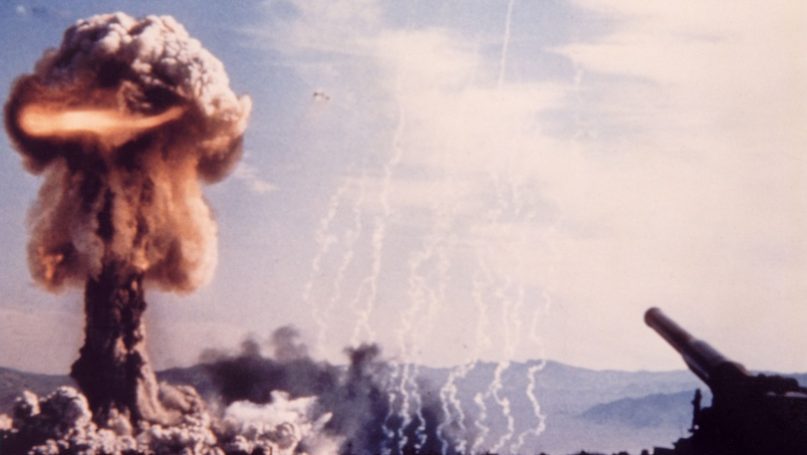Shivani Singh

A cornerstone of the global nuclear order’, ‘a foundational pillar of the non-proliferation regime’, ‘a touchstone agreement’ in maintaining stability in the international order. These are all phrases that are referred to in common parlance when talking about the Treaty on the Non-Proliferation of Nuclear Weapons – more commonly known as the Non-Proliferation Treaty (NPT). The tenth NPT review conference (RevCon) met from 1–26 August 2022 in New York and saw participation from all state parties, observer states and intergovernmental organisations. This gathering featured intensive discussions on all aspects of the NPT and the nuclear architecture at large – such as nuclear non-proliferation, disarmament and peaceful uses of nuclear energy. However, it fell short of adopting a consensus/final document. This article assesses the RevCon against two long-standing roadblocks – the inability to showcase dynamism in keeping up with the changing realities in the third nuclear age owing to a jaded NPT structure and a lack of consensus amongst party states and non-party states with nuclear weapons capability.
The need to address Emerging and Destructive Technologies (EDT) at the NPT and other similar forums has been a long-standing issue, especially with the advent of the third nuclear age. Technological advancements including artificial intelligence (AI) and hypersonic weapons carry adverse implications for not only non-conventional weapons space, mainly the weapons of mass destruction, but also conventional and hybrid warfare. There is plenty of research on ways in which AI systems, when fused with nuclear capabilities, can compress the decision-making time to react to potential threats. With advanced machine-learning, speed becomes a critical factor and when combined with absence of human intervention, can lead to inadvertent escalation. Similarly, other threats like a cyber-attack can cause just as much damage without having to use a nuclear weapon.
The NPT, as designed in 1968, was premised on the principle of deterrence to help mitigate scenarios of Mutually Assured Destruction (MAD). However, with the kind of technological advancements mentioned above, the very understanding of concepts of ‘deterrence’ and ‘stability’ needs a revisit. However, at present, the NPT is still deeply seeped in the colloquial Cold War language and lacks solid structures to keep track of, and address, the rapidly changing security landscape. Most states today, whether nuclear or non-nuclear weapon states – or even NPT non-party states like Israel that possess nuclear capabilities – have the wherewithal to inflict irrevocable damage on adversary without contravening nuclear-legal instruments in place like the NPT.
The draft final document although not adopted, acknowledged the existing and emerging nuclear security threats and appealed to the state parties to address such threats. The document mentioned the need for nuclear-weapon states to engage in dialogue with non-nuclear weapon states to address the “qualitative improvement of nuclear forces including advanced nuclear weapons and new delivery systems”. However, substantive discussions on EDT, a roadmap to address these threats and most importantly its implications on age-old notions of nuclear deterrence remains elusive in the NPT framework hence, carrying the risk of making it redundant in the near future.
UN Secretary-General Antonio Gueterres in his opening remarks at the RevCon emphasised ‘peace cannot take place in the absence of trust and mutual respect’. Trust amongst state parties forms the very crux upon which the NPT stands. The origins of the global nuclear order of which this treaty was a foundational pillar was premised on a certain consensus amongst the great powers with nuclear weapons capability and the non-nuclear weapons states and that manifested in the form of a grand bargain where the latter agreed to forgo possession of nuclear weapons in return for the former’s commitment to eventual disarmament. More than 50 years later, not only has this consensus not been upheld but, on the contrary, has plunged into a jarring trend of re-armament.
Since the adoption of the NPT in 1968, at least four states developed nuclear weapons capability – none of which are party to the treaty. It is anybody’s guess that these states are neither going to renounce their nuclear weapons, nor going to join the treaty as Non-nuclear Weapon States (NNWS), as has been made clear in the statements by the state heads over the last few decades. However, in what seems like conscious negligence on part of the NPT, the draft final document issued a clarion call for “India, Israel and Pakistan to accede to the Treaty as NNWS, promptly and without conditions”. This points to the Treaty’s lethargic procedures and most importantly, the inability to think dynamically about pathways for accommodating the breakout states within the fold of the nuclear non-proliferation regime, thus widening the rift further.
The future of the NPT and the global nuclear order at large banks on reviving consensus. Recommendations like offering associate membership of the NPT to states like India and Pakistan as well as breakout states like Iran and North Korea or creating an NPT-plus framework which would grant these states the recognition and status that they desire. But so far none of these suggestions have made it to the drawing board. With every NPT RevCon, the universality of the treaty is stressed upon without actually delving into the details of how to achieve universality in the true sense given almost half of the states with declared nuclear weapons capability continue to denounce the treaty and remain out of the framework. These are difficult conversations that need to be had in order to address the roadblocks in the way of achieving progress on disarmament and non-proliferation.
No comments:
Post a Comment